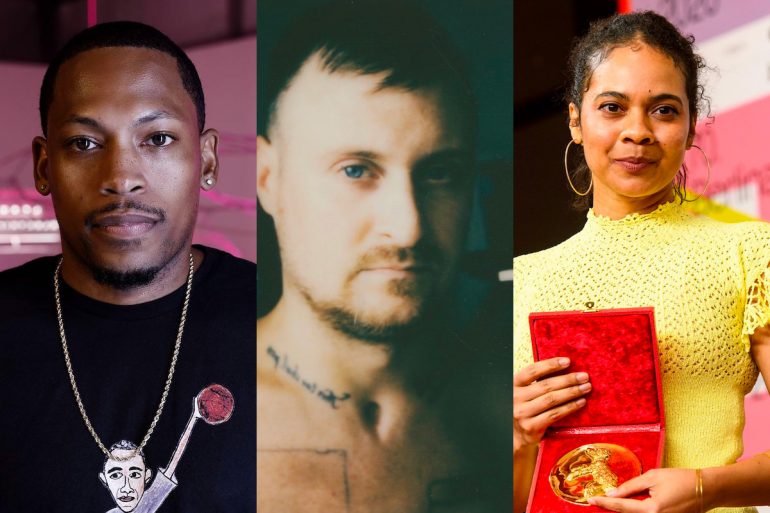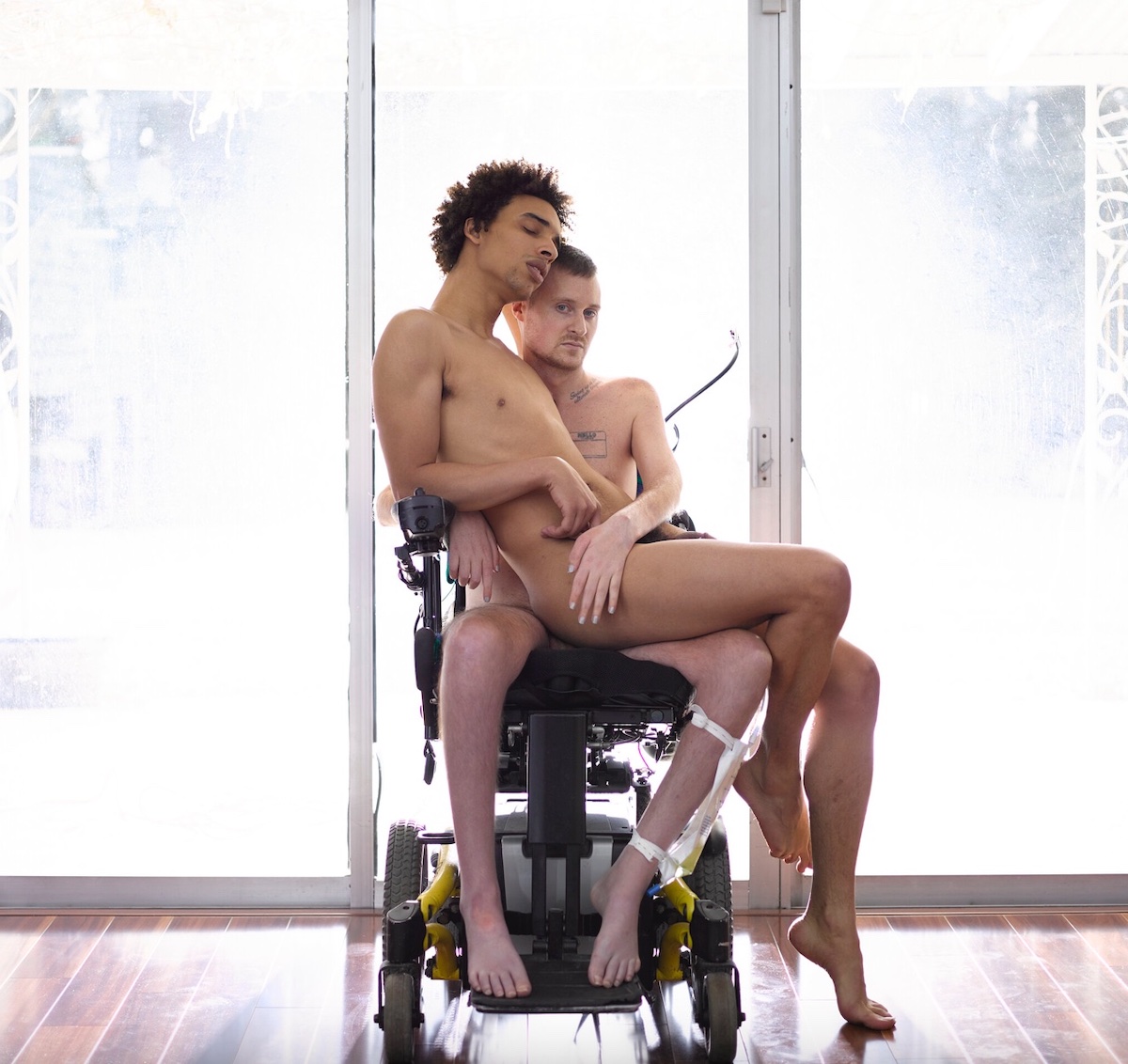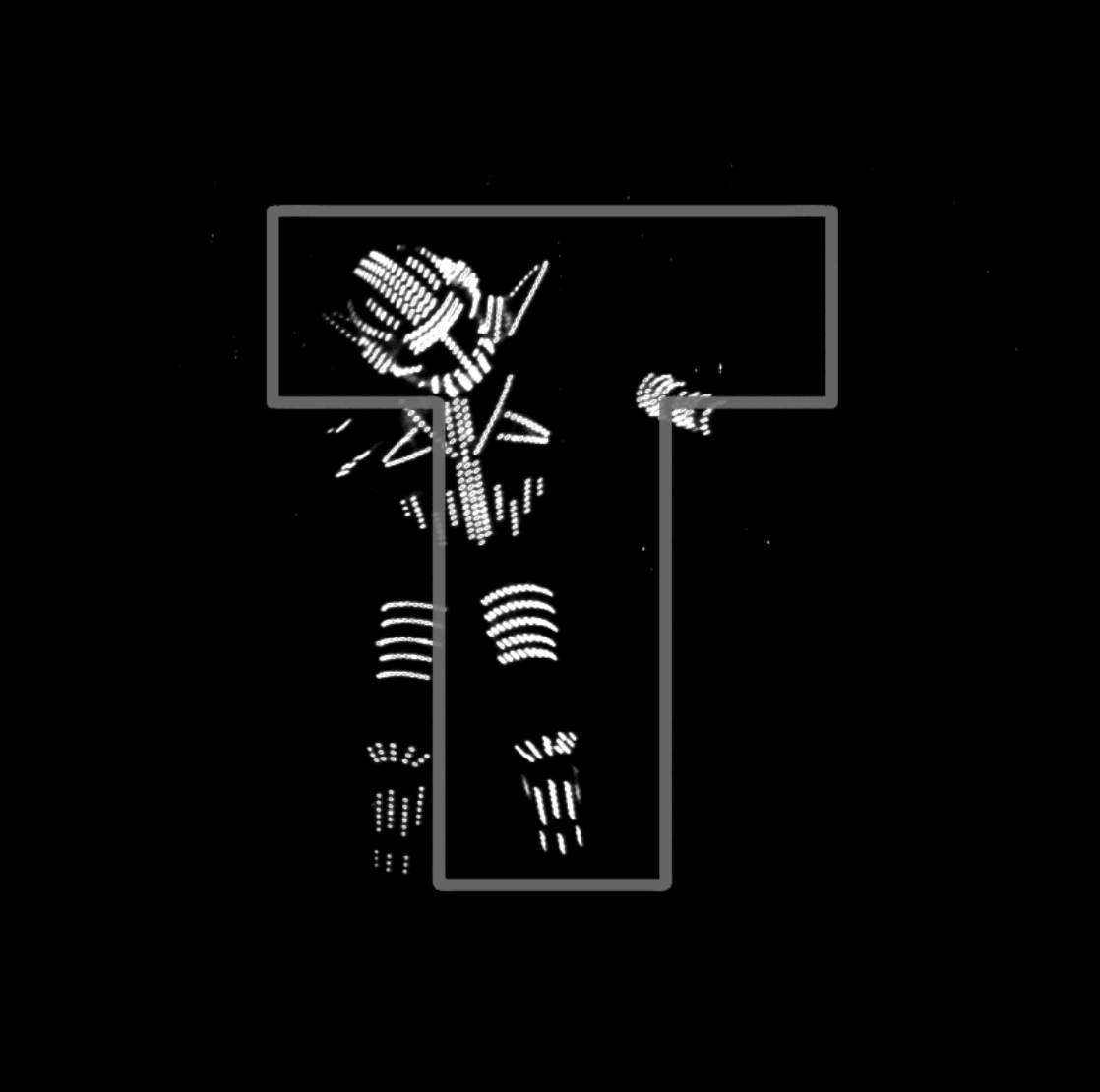
This post is also available in:


“Believe in Artist!” is the motto of United States Artists -USA-, the Chicago based organization, founded in 2006 by the Ford, Rockefeller, Rasmuson and Prudential Foundations with the contribution of numerous partners, including the Andrew W. Mellon Foundation, the John S. and James L. Knight Foundation and the Kenneth Rainin Foundation.
The purpose of the organization is to make up for the lack of funds for artists belonging to the disciplines of Architecture & Design, Craft, Dance, Film, Media, Music, Theater & Performance, Traditional Arts, Visual Art, and Writing.
The USA Fellow has decided to give a $ 50,000 cash fellowship, that can be used by the winners without any constraint, as they please: to expand their work, to pay rent or to obtain health care, for example.
The selection process is developed by a team of different professionals and takes a full year to complete. The fellowship is not awarded based on a single project but on the continuous practice of the artists. The fundamental themes in the assignment of fellowships are social practice, education, and pedagogy along with the innovative vision of the individual. Once nominated, the winning artists must present an essay on the importance that the practice represents for themselves.
Over the years, the organization has awarded more than 750 artists and cultural operators with over $ 36 million in direct support, like the painter and visual artist Howardena Pindell (2020), the composer and creative trumpeter Wadada Leo Smith (2021), dancer and choreographer Alice Sheppard (2019), and many more.
Bisa Butler, a 2021 Craft Fellow, says, “Being chosen as a United States Artist Fellow has been paradigm-changing for me. Many times, we as artists are restricted in our creativity because we are anxious about where our funds will come from. Having this award has allowed me to feel brave in my decisions and made me a part of a unique artists community of creative minds.”
Each year since 2019, United States Artists has also presented the Berresford Prize – an unrestricted $25,000 award given to a cultural operator who has contributed significantly to the advancement, well-being, and care of artists in society.
The 2022 edition is the largest in the history of the institution and sixty-three artists from twenty-three states and Puerto Rico were awarded. The 2022 class also represents the commitment to support in raising and amplifying the minorities: native and indigenous artists, disabled artists, artists from the black community and migrants. “These sixty- three fellows are representative of the magnificent range of disciplines and diversity of our nation’s artists,” said Ed Henry, USA Board Chair. “Artists live and work in every community across this country, and we want to support as many of them as possible,” declared Judilee Reed, who has just been announced as USA’s next President and CEO.
Among the winners of the 2022 edition, there are three artists from Miami: the architect Germane Barnes, the photographer Robert Andy Coombs and the filmmaker Keisha Rae Witherspoon.Miami Niche will unveil the meaning of this award based on the practices of the winning artists and their contribution to society.

Germane Barnes, founder of Studio Barnes and Professor at the University of Miami -UM-, was born and raised in Chicago and earned a bachelor’s degree in Architecture from the University of Illinois. His recognition of the US 2022 is due to his interest in the intersection between architecture and identity. The subject was already his theme of his master’s in architecture, obtained at Woodbury University. The project, titled “Symbiotic Territories: Architectural Investigations of Race, Identity, and Community”, was awarded a special award. “Is one of the biggest awards that I personally have won and being so young it’s super exciting because I think I worked really hard, and it’s been very rewarding to have someone that noticed that. There are so many stories to have been told, I’m only just lucky to be able to tell these stories,” Barnes said.
According to Barnes, architecture represents an opportunity for material, conceptual and social transformation. By examining the social and political action of architecture through historical research and design speculation, the architect analyzes how the built environment mainly affects the black domesticity. The architect is a familiar face to the Miami community, where, in addition to having several projects in the pipeline, he recently presented the immersive installation ON / for LEXUS at Design Miami / during Miami Art Week. His social activism also led him to be a speaker at the Urbanism Summit for the city of Miami.
“I’m very fortunate, I grew up with my parents, I’m married, I have a house…all the things a person should have the rights to have. But there are lot of people that don’t have the same opportunities. A lot of this is because of identity politics and their representation and that’s why architecture and identity are so crucial,” Germane Barnes said.
According to Germane Barnes, historical research is a fundamental element in understanding social dynamics, therefore he will use the award he received from the USA Fellowship to extend his studies in Classical Architecture in Rome, at the American Academy. Here he will participate – thanks to the fellowship money and without worry – in the Rome Prize with a project that aims to highlight the contribution of the North African population in the architecture of ancient Rome. “Many people outside of Italy or Europe don’t realize that a lot of North Africans have gone back and forth between Morocco, Ethiopia and other places. People don’t know that, and I want to see what I can learn because in America they don’t talk about any of that. And it is sad because when people talk about architecture they only talk about a certain kind of history, says the architect.
It would be very interesting to hear what Germane Barnes will have to say about Rome, one of the most glorious city of the Past, that has shaped the Western culture.
The Architect’s wish is to be an inspiring role model for the young generation. “The academia is changing and the students I teach now are so much more brave then I was as a student because they understand responsibility, they demand more to the academia and to the faculty. It’s easy to design a building, it’s hard to understand how that building impacts the community and the social legacy. Now there is more much humanity inside the process and that’s making me happy because now peoples are understanding that all this things work together and race or gender has nothing to do with architecture”, he said.
Regarding his fellowship and his plans for the Rome Prize, an excited Germane Barnes does not forget to thank those who made it possible: his parents, because with a lot of sacrifices they have done everything possible to make him follow his goals and study in the best schools, and his grandparents, who had to face fundamental but terrible moments leading to the evolution of social history, such as racial segregation.
“Any chance I can get is an honor for them. Any time I have an exhibition my mum come to see my work, they are so proud of me”, he declares.

Michigan-born photographer Robert Andy Coombs received his BFA thanks to a scholarship from Kendall College of Art and Design in Grand Rapids, Michigan and his MFA in Fine Arts from Yale University. In 2019, the Patricia and Philip Frost Art Museum in Miami dedicated a solo exhibition to his work: “Notions of Care”, in which the artist tells the story of the emotional and physical cures he relies on every day through photographs. Jerry Saltz, his big fan, has included him in the top-ten list of the best artists of 2019, declaring that he cannot get Coombs’ work out of his head.
His appointment to the USA Fellowship 2022 is due to the sensitivity with which he highlighted, firsthand, the intersection between disability and sexuality.
Coombs has always been attracted to art, and after he has begun studies in Graphic Design he dropped out of school to enroll in photography. Today he is a photography teacher at the University of Miami, UM. For him, photography is passion that began as a child when he used to photograph fragments of the landscape during his walkabouts. During high school his interest shifted to portraits, then in 2009 it went through a major change. An accidental fall from a trampoline caused a spinal cord injury, leaving him quadriplegic in a wheelchair. Although the accident immobilized him, however it but did not prevent him from achieving his goals with astonishing grit and determination. He graduated from the prestigious Yale University and he gave a speech at the equally prestigious Pratt Institute as an artist, thinker, and influencer.
If, on the one hand, the accident immobilized him, on the other it offered him the opportunity to hover beyond the conventions, giving him the opportunity to go beyond the label of the disability-sexuality binomial to which society has accustomed us. Coombs declares the inadequacy of the system in answering the questions that young people normally ask themselves. A problem that is further amplified if you are disabled. “I had to do personal research to figure out how to make sexuality and disability work because the people who were supposed to teach us didn’t want to talk about it. It was the same when I was twenty-one years old, and I was the only gay person in the class. That inspired the trajectory of my work. When we talk about sex and disability we must change. We are human, we have these needs as well”, declared the artist.
In his shots, Coombs goes beyond respectability and conventions to focus attention on the fact that the disabled are left alone to themselves, as if they have no sexual impulses.
The themes of relationships, assistance and fetish is a recurring one in his images. The photographer moves thanks to a wheelchair and does everything with assistance, he takes pictures using a joystick operated by his mouth. In the photographs he demonstrates that in disability there is a world made of pleasure but helplessness, fear and taboo, where the need for assistance faces the fear of asking for help; The thanks that comes from the heart and the blue of his eyes is for the loving gaze of those who take care of him.
In his photographic elaborations, where friends, lovers ones, and whoever left a mark on his life have a part, Coombs’ nonconformist vision clearly emerges, apart from his homosexuality. The theme of homosexuality is not seen as a problem for the artist who states: “When it comes to sex and sexuality everyone is uncomfortable but, in my family, we have always faced the issue of sexuality in a completely spontaneous and natural way and I have always had their support. I can say I have a great life. “
Coombs’s photography let the viewer wonder, not so much about the more or less explicit sexual representations but rather about the energy that Coombs, active subject of the pictures, emanates. In the crudeness of his images made up of inner personal narratives there is no feeling of shame or pity, and the artist passes from the condition of impotence to the position of power. Looking at some images, such as the one that refers to Michelangelo’s Pietà, the focus should be concentrated on the artist who supports the body of the friend / lover. In this image, as in others, it is possible to find similarities to the Art world, however, the artist affirms that there is no intentional reference, but rather some faint memories that re-emerges from his past studies.
As per the day he received the news of the nomination he declared that the good news came in a sad day, because the same day he bade farewell to his beloved service dog, Ladd. ”With Ladd it has been unconditional and loyal love for over a decade. We spent a lot of time together and when you have a service dog like Ladd for so long it’s hard to say goodbye,” said the artist.
About the fellowship he declared: “Any artists need to have confirmation that their own work are doing something important It’s a kind a validation that give you one more purpose. That’s mean a lot for me, and the money helps, especially when you’re dealing with disability.”
Coombs has not yet clear in mind in what way he will use the fellowship money: whether to give a deposit for the purchase of an apartment disabled friendly or rent a studio to work creatively. What is certain is that he will continue to break down the barriers of respectability and social conventions by overturning the status quo.

Keisha Rae Witherspoon is an independent filmmaker Born and raised in South Florida, where she studied photography and journalism, she has Jamaican roots. In 2020 she was named by Filmmaker Magazine “among the 25 new faces of independent cinema.” In her films she loves to combine speculative fiction, fantasy, and science. The artist was nominated for the USA fellowship for her efforts in recounting the shades, unseen and unannounced, of people belonging to the African diaspora. It was not possible to contact the filmmaker and find out whom she dedicated the fellowship to and how she will use the large sum of money. However, we advise you to look at the latest production: “T”. The short movie is set in Miami’s historically black neighborhood, Liberty City, and won the Golden Bear at the Berlin Film Festival. In the short, a film crew follows three grieving attendees at Miami’s annual “T Ball” memorial. During the T Ball, people wear commemorative T-shirts with pictures of the deceased as an act of public expression of their loss. It is a ritual they perform while grieving and the testimony of a life taken prematurely by violence in neighborhoods where these murders don’t always make the news. “I was thinking about the ritual in the black community, the popularity of R.I.P. T is not about the causal terms of our existence, but about achieving a deep love for ourselves and for the community. I felt that if the T-Ball had existed, the community would have participated”, the artist said.
The movie can be streamed on The Criterion Channel.
Whiterspoon is currently writing a Black sci-fi (Science-Fiction) titled “Untitled Opa-locka Project” which will also be her debut as moviemaker. The movie is being developed and represents a post-alien black sci-fi drama set in Opa-locka, Florida. The artist is also the creative director of Third Horizon, a collective of Caribbean artists he co-founded in 2013. The commitment to this production work has led Third Horizon to Sundance, Toronto International, BlackStar, Sheffield Doc Fest and several others.
(On the title: from. left, the architect Germane Barnes, the photographer Robert Andy Coombs and the filmmaker Keisha Rae Witherspoon )
